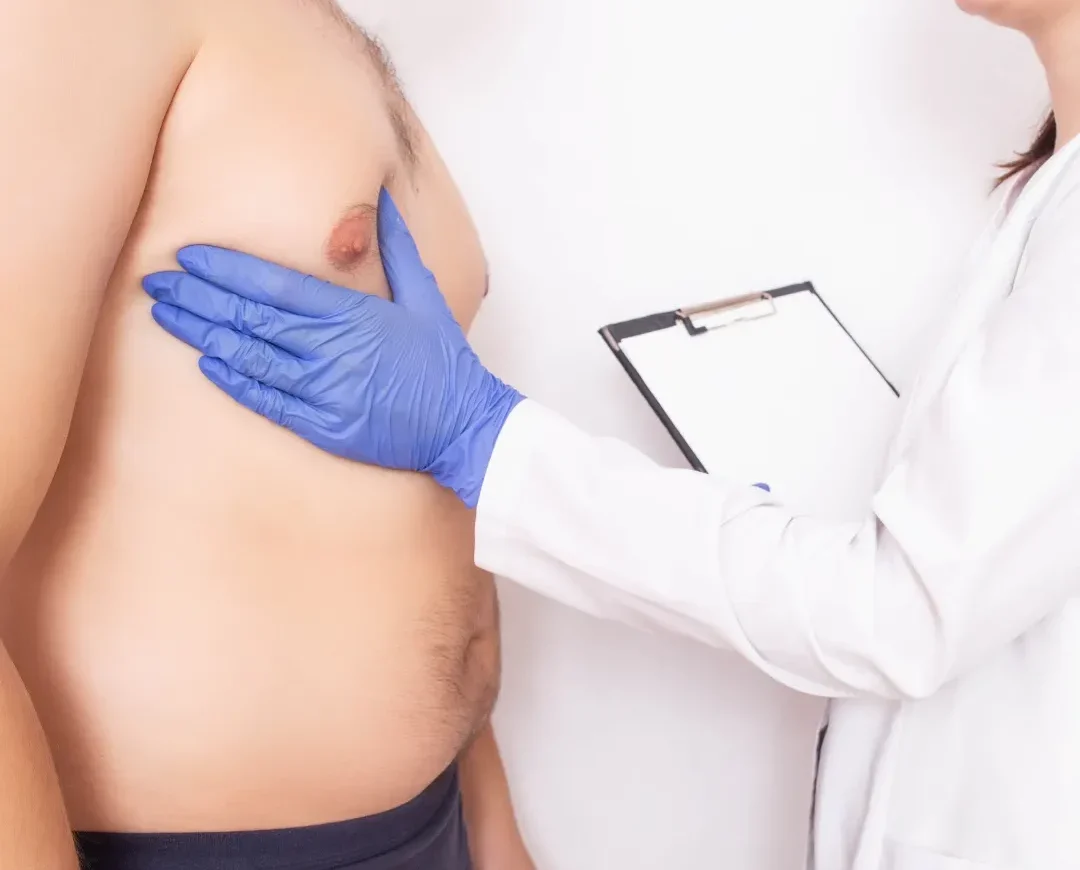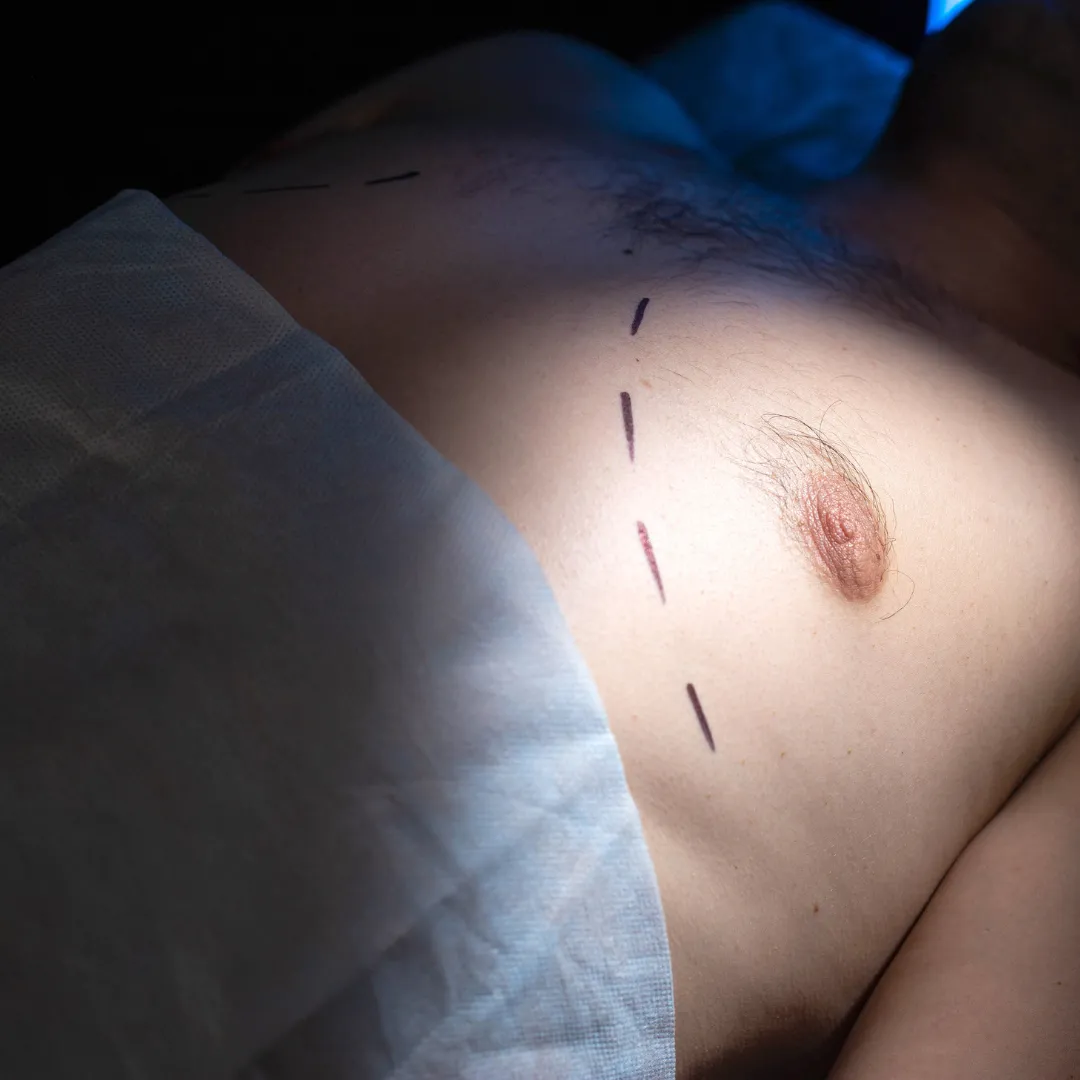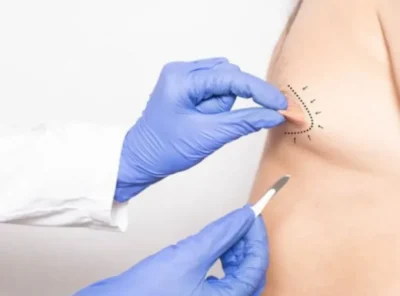Gynecomastia
Gynecomastia is seen in one out of every 3 people. Gynecomastia, defined as benign, excessive breast development, occurs during infancy, old age and adolescence. This condition, which damages the functions of body integrity, disrupts the balance of the biological system. Gynecomastia, which is usually caused by the imbalance of estrogen and testosterone hormones, may occur in one breast of some people and in both breasts of some patients. In particular, the fact that both breasts are irregularly affected and reach different sizes from each other also affects aesthetically. So, what is gynecomastia? Here is the answer!
Choose Your Topic
Get in Touch
Get professional treatments in Turkey at Lygos Clinic, offering effective, affordable treatments for a healthier and more aesthetically pleasing life.
You can contact us via WhatsApp and Instagram for a quick response.

What is Gynecomastia?
Gynecomastia is a condition that affects 1 in 3 people, characterized by benign, excessive breast development. It can occur at various life stages, including infancy, adolescence, and old age. This condition disrupts the natural balance of the body, affecting both physical appearance and psychological well-being.
Gynecomastia typically results from an imbalance between the hormones estrogen and testosterone. It can affect one or both breasts, and in cases where both are affected, the breasts may not be symmetrical, further impacting aesthetic appearance.
How to Recognize Gynecomastia?
Growth in a person's breast area can occur due to many reasons. However, this problem can also occur as false gynecomastia. Therefore, many people are curious about the question "How to recognize gynecomastia?". In order for a patient to understand that he has gynecomastia, he should be examined by a doctor. Otherwise, he may make wrong decisions.
Manual examination of both breasts by a specialist doctor provides the most accurate analysis of the problem. A hard and walnut-sized mass felt behind the nipple may indicate a gynecomastia problem. However, USG is performed to confirm the existing problem. Together with the examination, USG reveals whether the patient has gynecomastia or not.


What Causes Gynecomastia?
Gynecomastia is caused by an imbalance between estrogen and testosterone hormones, leading to the growth of breast tissue. While testosterone controls male characteristics such as muscle mass and body hair, estrogen promotes breast development.
If testosterone levels decrease or estrogen levels increase in men, gynecomastia can occur. This condition can also be caused by other medical issues or changes in hormone levels, leading to breast enlargement.
Risk Factors for Gynecomastia

1. In Infants
Gynecomastia can occur in newborns due to the estrogen transferred from the mother. This typically resolves within 2 to 3 weeks after birth.

2. During Adolescence
Hormonal fluctuations during puberty make males more susceptible to gynecomastia. In most cases, the condition resolves within 6 months to 2 years.

3. In Adults
Men between the ages of 50 and 69 are more likely to experience gynecomastia, with one in four men in this age group affected.
How is Gynecomastia Diagnosed?
To diagnose gynecomastia, a thorough examination by a specialist is required. A physical exam and ultrasound are used to detect abnormal growth in the breast area. A hard, walnut-sized mass behind the nipple may indicate gynecomastia. A doctor will perform a manual examination and use imaging techniques like ultrasound to confirm the diagnosis.
Is Gynecomastia Surgery Permanent?
Gynecomastia surgery can provide permanent results, but the permanence depends on several factors. A detailed examination by a specialist is necessary to determine the best treatment approach.
Different types of gynecomastia, such as glandular, fatty, or mixed, require different surgical methods. Post-surgery care and the patient’s recovery process also influence the long-term outcome.

Gynecomastia Surgery Techniques
Gynecomastia surgery involves either liposuction or traditional surgery, depending on the severity of the condition. Liposuction is usually used for moderate cases with excess fat, while surgery may be necessary for more severe cases, especially when glandular tissue is present. The procedure is performed under general anesthesia, and small incisions are made to remove excess tissue. The surgical approach is determined based on the patient’s specific condition and aesthetic goals.In cases where there is excessive sagging or excess skin, more invasive techniques such as the inverted T or lollipop incision methods may be used. Post-surgery, some patients may require drains to help with fluid buildup, and the recovery period can vary.

How is Gynecomastia Surgery Performed?
First of all, it should be made sure that the patient has gynecomastia. For this, the patient is examined both in terms of health and aesthetics. In this process carried out by the doctor, the patient's demands are also taken into consideration. After the necessary interventions are made, the final condition and stage of gynecomastia are determined.
Since the breast will be given a normal and natural appearance, determining the correct surgical method and technique plays a critical role. Gynecomastia surgery is usually performed by surgical methods or liposuction. After the level of the problem in the patient's area is measured, it is decided which of these methods will be applied. Liposuction may be preferred for low or moderate sagging.
Incisions are made with an average of half a centimeter. The procedure is applied with a cannula or needle according to the patient's body structure and the doctor's decisions. Careful and meticulous work should be carried out in the operation where fat is removed.
Surgical intervention may be necessary if the patient's tissue under the nipple is above a certain size. In addition, progressive sagging is also included in these interventions. In gynecomastia surgery, an incision of approximately 1 to 1.5 centimeters is made under the breast.
It must be ensured that this incision is made meticulously to remove breast tissue. Otherwise, permanent scarring may occur. Depending on the size of the breast tissue removed, the skin around the nipple can also be removed. In this way, the treatment is completed by removing all breast tissue.
The problem can be eliminated by applying liposuction to patients with excess fat tissue in the breast. This method, which has a very low risk of scarring after gynecomastia surgery, also has a short recovery period.
Liposuction method can also be performed with laser. This technique, which is preferred by many patients, heats the skin layer with the help of laser after fat removal. Therefore, laser liposuction creates a tightening effect on the skin.
Liposuction may not have sufficient effect in cases where the breast tissue is excessive and not the fat tissue. In patients who experience this situation, semicircular incisions are made in a small size from the nipples together with liposuction. The surgery is completed after the breast tissue is removed.
Excess skin also affects gynecomastia surgeries. In patients approaching the breast size of women, excess skin usually becomes very prominent. For these problems, the open surgery method comes to the fore. In open surgery, the lollipop or inverted T technique, which is also applied to women, may be preferred.
In the liposuction method or small incision procedures, a drain is inserted according to the patient's condition. However, drain placement can be expected in all open surgeries. You can ask the expert team of Lygos Clinic what you wonder about gynecomastia surgery.
Does Gynecomastia Surgery Hurt?
Gynecomastia surgery provides effective results by applying the right technique and choosing a specialist surgeon. However, the question "does gynecomastia surgery hurt?" is wondered by many patients. Sedation is applied so that the patient does not feel any pain and pain during the operation.
In procedures performed under general anesthesia, local anesthesia can also be added for patients who are sensitive to pain. Mild pain may be experienced after gynecomastia surgery. However, these pains can be relieved with prescription medications given by the doctor.


Treatment Options for Gynecomastia
Treatment options depend on the underlying cause of gynecomastia. In some cases, lifestyle changes like weight loss or hormone therapy may help. However, for more persistent or severe cases, surgery may be required. The appropriate treatment method will be determined after a thorough examination by a specialist.
What Happens If Gynecomastia is Not Treated?
In some cases, gynecomastia may resolve on its own, particularly in adolescents. However, if the condition persists or worsens, it may lead to ongoing psychological distress or physical discomfort. Untreated gynecomastia can also result in complications such as excessive tissue growth, making surgical intervention necessary in the future.


Pseudo Gynecomastia vs. Gynecomastia
Pseudo gynecomastia refers to the enlargement of the breast due to the accumulation of fat tissue, not glandular tissue. It is important to distinguish between true gynecomastia and pseudo gynecomastia, as the treatment methods differ. A proper diagnosis by a specialist is essential to determine the appropriate course of action.
Gynecomastia Surgery Costs
The cost of gynecomastia surgery can vary depending on the method used, the surgeon’s experience, and the clinic’s equipment. It is best to consult a specialist for an accurate estimate of surgery costs based on individual needs and conditions.

Get in Touch
Get professional treatments in Turkey at Lygos Clinic, offering effective, affordable treatments for a healthier and more aesthetically pleasing life.
You can contact us via WhatsApp and Instagram for a quick response.
Frequently Asked Questions Gynecomastia
Yes, gynecomastia can significantly impact self-esteem. Men with enlarged breast tissue may feel self-conscious about their appearance, especially in social situations or when removing their shirt. Surgical correction can help restore confidence by creating a flatter, more masculine chest profile.
BLOG

How do Breasts grow?
How do Breasts grow? The growth of breasts is typically a natural process in a woman’s life and can be

“What helps with breast pain?”
“What helps with breast pain?” Breast pain is a common condition experienced by many women and is often caused by

What’s Good for Nipple Sores
What’s Good for Nipple Sores Breast pain is a common condition experienced by many women and is often caused by



